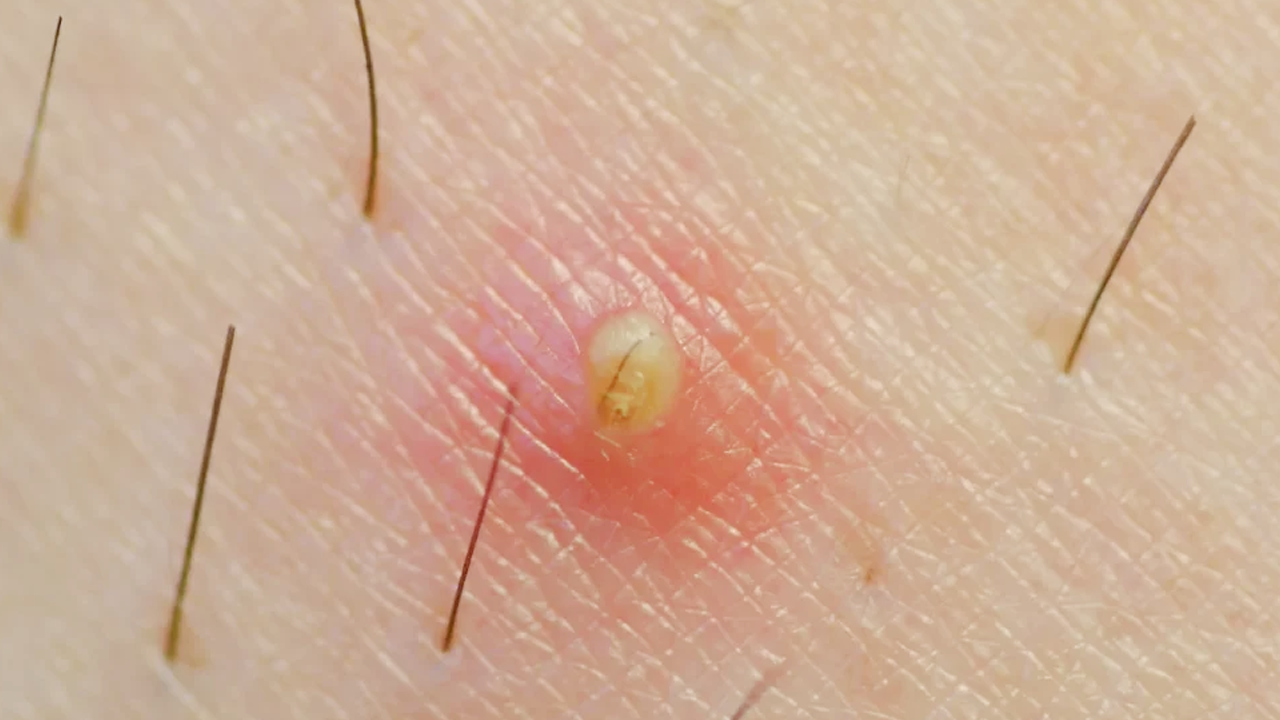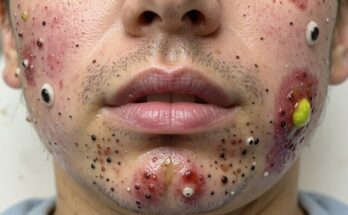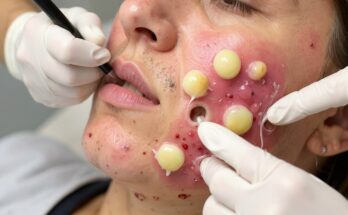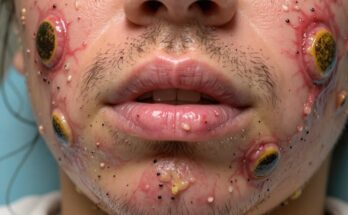Navigating Facial Cysts: A Comprehensive Guide
Facial cysts can be unsightly and uncomfortable. Understanding your options for treatment, from professional medical intervention to home care strategies, is crucial for managing these skin bumps effectively. This guide provides a detailed breakdown to help you make informed decisions about your care.
Professional Cyst Removal: The Safest Route
When dealing with a facial cyst, seeking professional medical attention is always the best approach. A dermatologist or physician possesses the expertise and resources to properly diagnose and treat the cyst, minimizing risks and maximizing positive outcomes.
The Medical Process: Step-by-Step
The procedure typically involves several key steps:
- Diagnosis and Assessment: A healthcare professional will carefully examine the cyst, determining its type (sebaceous, epidermoid, pilar, etc.). This accurate diagnosis dictates the most appropriate treatment strategy.
- Anesthesia: To ensure your comfort, the area surrounding the cyst will be numbed with a local anesthetic before any procedure begins.
- Treatment Options: Depending on the cyst’s characteristics and the doctor’s assessment, several removal methods may be considered:
- Incision and Drainage: A small incision is made to allow the cyst’s contents to drain. While offering temporary relief, this method may not prevent recurrence as the cyst sac remains.
- Excision: This involves the complete surgical removal of the entire cyst sac, significantly reducing the likelihood of the cyst reappearing. This is often the preferred method for permanent removal.
- Marsupialization: For particularly complex cysts, this technique involves opening the cyst and suturing the edges to facilitate ongoing drainage.
- Closure and Aftercare: If excision is performed, stitches may be necessary to close the wound. Post-procedure care involves applying antibiotic ointment and diligently following the doctor’s instructions for wound cleaning and hygiene to prevent infection and promote healing. Follow-up appointments are often scheduled to monitor progress.
Home Management: When Professional Care Isn’t Immediately Accessible
While medical removal is strongly recommended, situations may arise where immediate professional help isn’t available. However, it’s crucial to emphasize that home remedies should only be considered for small, uninfected cysts and should never replace professional medical advice. Attempting to manage a larger, infected, or complex cyst at home can lead to serious complications.
Cautious Home Care Strategies
If you choose to attempt home management (again, only for small, uninfected cysts), these steps should be followed:
- Avoid Squeezing or Popping: This is paramount. Squeezing can push the cyst’s contents deeper into the skin, leading to infection and potentially worsening the situation.
- Warm Compresses: Applying a warm, damp washcloth for 10-15 minutes, several times daily, may help reduce inflammation and encourage natural drainage.
- Gentle Cleansing: Keep the area clean by washing gently with a mild cleanser.
- Monitoring for Infection: Watch closely for any signs of infection, such as increased redness, swelling, pain, or pus. If any of these develop, seek immediate medical attention.
Exploring Natural Remedies (With Caution)
Some individuals explore natural remedies like tea tree oil, turmeric, or castor oil for their potential anti-inflammatory or antimicrobial properties. However, scientific evidence supporting their effectiveness in cyst removal is limited. Always dilute essential oils before application and consult a healthcare provider before using any natural remedies, especially if you have sensitive skin or other health concerns. These should be considered adjunctive treatments only and never as a replacement for professional care.
When to Seek Immediate Medical Attention
Don’t hesitate to seek medical help if you observe any of the following:
- Rapid growth or change in appearance of the cyst.
- Increased pain, redness, or swelling around the cyst.
- Pus or other discharge from the cyst.
- Bleeding from the cyst.
- The cyst returns after previous treatment.
- You have any concerns about the cyst’s nature or potential complications.
This guide offers comprehensive information, but it’s not a substitute for professional medical advice. Always consult a healthcare professional for diagnosis and treatment of facial cysts. Early intervention significantly improves the chances of successful and complication-free resolution.



